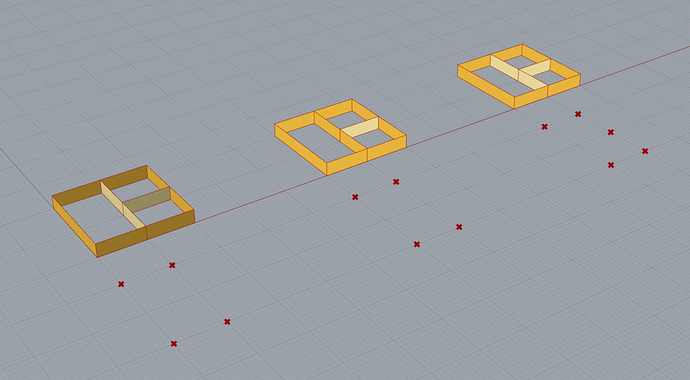Hi everyone,
I am working with the python libraries of the new Ladybug tool.
I started to generate Honeybee models of my geometries but I had issues with the solve_adjacency function: with the simple floor layout I used some internal walls were identified as walls. It happen when one interior wall is going through the entire length of the building while being adjacent to multiple rooms. I had to add a point in the middle of the wall (in the footprint curve) to bypass the problem.
I did not remember having this problem with Honeybee legacy, so I tried to reproduce the problem in Grasshopper and indeed, the honeybee legacy can handle the internal wall properly, but the new version cannot, even in Grasshopper.
Here is a screenshot illustrating the problem :
On the left Honeybee legacy, middle Honeybee/Dragonfly, right Honeybee/Dragonfly with an additional point.
Below the Honeybee models the points that form the footprint of the big room on the left.
Note that the position of the additional point does not seem to matter (see the file below), as long as it is on the problematic wall of course…
Here is the link to the Grasshopper file (as I am not allowed to upload the file here as a new member) :
https://www.dropbox.com/sh/yvsxfe2kjywoa6s/AABSOizl-uyGYloVLBAKhtH1a?dl=0
If for some reason we cannot get the behavior of the legacy solve_adjacency function that would be great to know what are its limits/how we should draw the geometries so that it considers the internal walls properly.
I think I used the functions of Honeybee and Dragonfly the right way, and the only difference between the working and not working geometry is just one “useless” point, but I might have made a mistake. Please let me know if I did not use them properly.
Thanks by advance !
Elie MEDIONI

